All About Betta Fish: Your Ultimate Care Resource
Published: 12 Mar 2025
One of the most common issues Betta fish owners face is the misconception that these vibrant creatures can thrive in tiny bowls. While Bettas are resilient, cramped spaces lead to stress, illness, and a shortened lifespan.
Your Betta’s health will quickly deteriorate without proper care and the right environment. In this article, we’ll explore the essential steps you need to take to ensure your Betta fish thrives in a healthy, comfortable home.
1. Introduction to Betta Fish
Betta Fish, native to Southeast Asia, is a sight to behold. Their vibrant colors and flowing fins, set against the backdrop of the shallow waters of Thailand, Cambodia, Laos, and Vietnam, have captivated aquarium enthusiasts for centuries.
Betta fish are famous for their aggressive nature, particularly males, known for their territorial behavior. While they are relatively easy to care for, it is essential to understand their specific needs and behavior to provide them with the best environment.
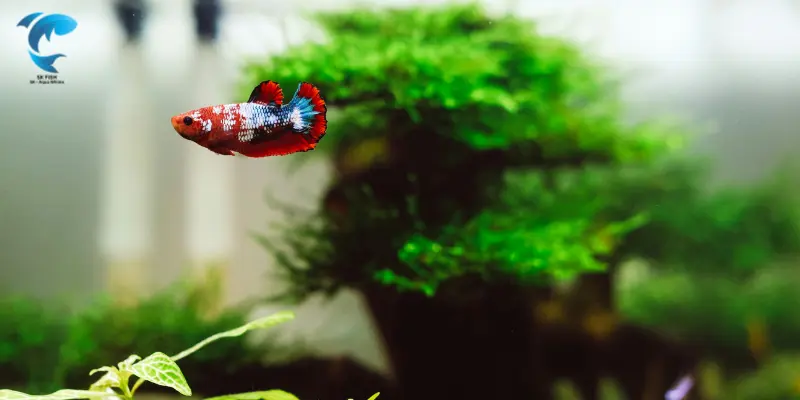
2. Betta Fish Anatomy and Physical Characteristics
Body Structure
Betta fish are small and colorful, typically reaching 2.5 to 3 inches (6.35 to 7.62 cm) in length, not including their fins. Despite their small size, their long fins and bright coloration make them one of the most eye-catching Fish in the aquarium world.
Fins & Tail Types
One of the most distinctive features of Betta fish is their wide variety of fin shapes and tail types. Here are some of the most common types:
- Veil Tail: The classic Betta tail has long, flowing fins resembling a veil.
- Crowntail: A spiky tail that gives the Fish a crown-like appearance.
- Halfmoon: A tail that spreads in a perfect 180-degree arc.
- Plakat: Shorter fins, giving it a more natural appearance.
- Rosetail: Layers of overlapping fins that give a ruffled, rose-like appearance.
- Super Delta: A tail that spreads less than a Halfmoon but is still wider than a Veil Tail.
3. Betta Fish Behavior
Aggression and Territoriality
Betta fish, especially males, are highly territorial. Male Bettas often engage in aggressive behavior when they see other males, such as flaring their gills and fighting. This is why male Bettas should never be housed in the same tank.
Flaring
Flaring is a typical behavior among Betta Fish. They extend their fins and gills in response to threats, such as another Betta fish or their reflection. Flaring is often seen during courtship but can also indicate stress or aggression.
Bubble Nesting
Male Bettas build bubble nests at the water’s surface to house fertilized eggs. This behavior is part of their mating ritual; only males construct these nests.
Sleeping Patterns
Betta fish do sleep, but unlike humans, they don’t have eyelids. Bettas sleep at night, resting in sheltered spots at the bottom of the tank or near plants. A consistent day and night light cycle should regulate their sleep cycle.
4. Types of Betta Fish
The world of betta fish is diverse and fascinating. Various types have unique physical traits, including differences in fin shapes, colors, and tail types.
1. Veil Tail Betta
- Description: The Veil-Tail Betta is the classic Betta variety that most people are familiar with. This variety features long, flowing tail fins that resemble a veil, making it one of the most graceful and popular Betta fish types.
- Colors: It is available in various colors, including red, blue, purple, and multicolored variants.
- Care Considerations: Veil-tail bettas are easy to care for and great for beginners due to their peaceful nature and hardiness in various tank setups.
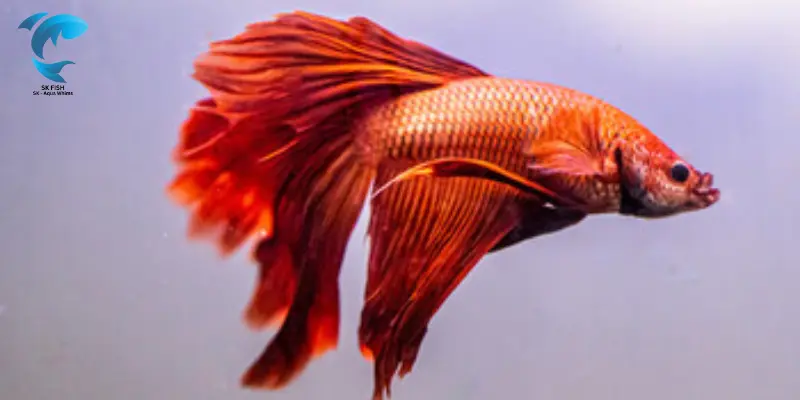
2. Crowntail Betta
- Description: The Crowntail Betta stands out because its tail has spiky, crown-like projections. These spiked tails are what give the Crowntail its name.
- Colors: Crowntails come in various color combinations, from deep reds and blues to vibrant oranges and purples.
- Care Considerations: Crowntail Bettas are more energetic and aggressive than the Veiltail Betta, making them suitable for owners looking for an active Betta with striking fins.
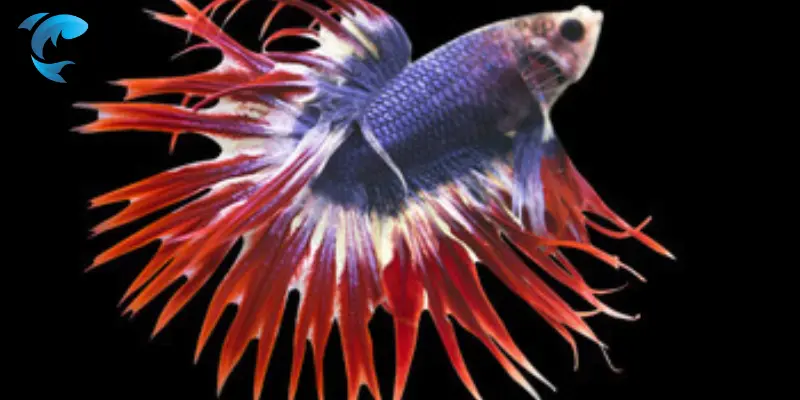
3. Halfmoon Betta
- Description: The half-moon Betta is known for its large, symmetrical tail, which forms a perfect 180-degree spread when fully flared, creating a “half-moon” shape.
- Colors: This variety is available in stunning shades, including metallic colors and vibrant reds and blues. Halfmoon Bettas are often highly prized for their dramatic tail displays.
- Care Considerations: Due to their large fins, Halfmoon Bettas may need extra attention in tank maintenance to avoid fin tears and ensure their tank mates are non-aggressive.
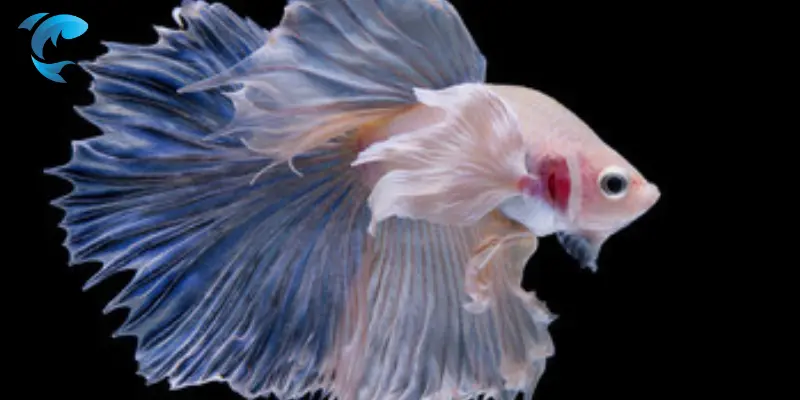
4. Plakat Betta
- Description: Unlike other Betta varieties, the Plakat Betta has shorter, stubbier fins, giving it a more natural, wild-like appearance. It resembles the Betta Fish in the wild and is typically more robust.
- Colors: Plakat Bettas come in a broad spectrum of colors and patterns, with their smaller fins often allowing them to display vibrant hues.
- Care Considerations: Plakat Bettas are known to be more active and resilient. Their shorter fins make them well-suited for a tank with a filter or gentle current.
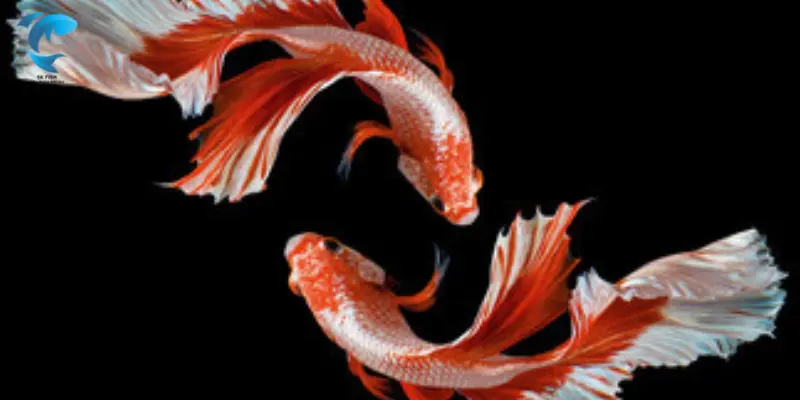
5. Double Tail Betta
- Description: As the name suggests, the Double Tail Betta has two separate tail fins, giving it a symmetrical and visually striking appearance. These Bettas often have a broader, thicker body as well.
- Colors: Available in various colors, Double-Tail Bettas are often seen in vibrant red, blue, and even multicolored patterns.
- Care Considerations: Double-tail bettas are generally peaceful, but their unique tail structure requires monitoring for fin health, as their tails are more prone to damage.

6. Dragon Scale Betta
- Description: Dragon Scale Bettas are known for their iridescent, scale-like appearance, resembling a dragon’s scales. Their scales are thick and glossy, making them a striking variety.
- Colors: Dragon Scale Bettas often feature a mix of metallic colors, such as silver, blue, or green, and their scales catch the light, creating an iridescent effect.
- Care Considerations: These Bettas are somewhat more sensitive to water quality than other varieties, so it’s essential to maintain a clean and stable tank environment.
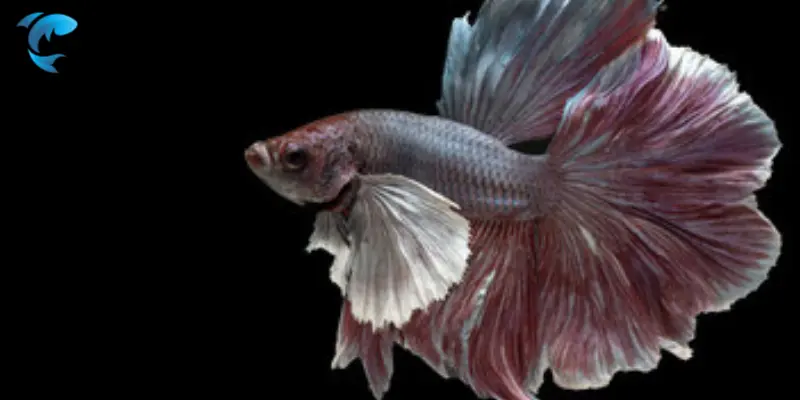
7. Koi Betta
- Description: Koi Bettas resemble koi fish, with white, orange, and black markings that create a stunning contrast across their bodies. Their unique and beautiful appearance is highly sought after in the Betta fish hobby.
- Colors: As the name suggests, these Bettas feature the classic koi fish color pattern—white, orange, and black—often with a smooth, flowing tail.
- Care Considerations: like other Betta varieties, Koi Bettas are relatively easy to care for but may require more attention to their diet and water conditions to keep their colors vibrant.
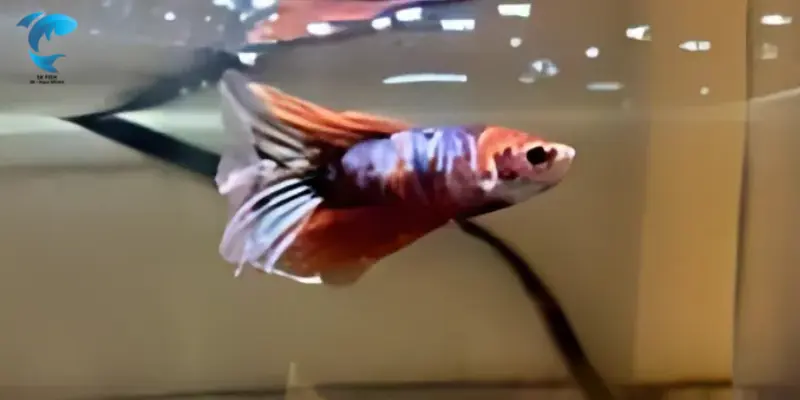
8. Mustard Gas Betta
- Description: The Mustard Gas Betta is a variation of the Betta Fish with a unique combination of blue or greenish-blue body colors and a bright yellow or mustard-colored tail.
- Colors: This Betta is strikingly contrasted, with a blue or turquoise body contrasting sharply with its yellowish tail.
- Care Considerations: The Mustard Gas Betta is hardy and adapts to different tank setups. However, maintaining its vibrant colors requires good water quality and a proper diet.
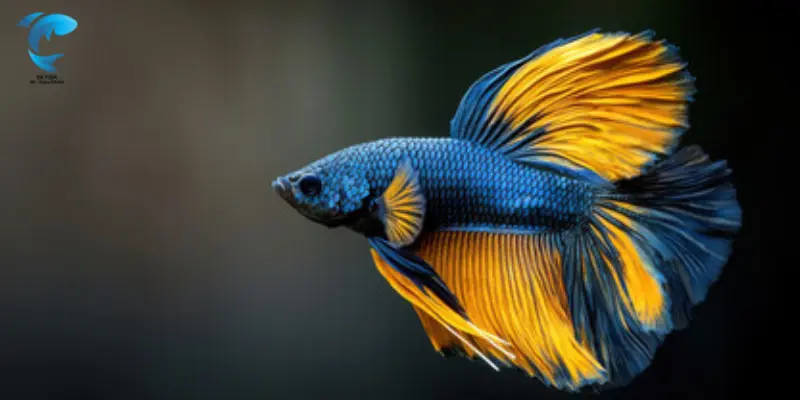
9. Super Delta Betta
- Description: The Super Delta Betta’s tail extends beyond the 180-degree angle but doesn’t quite reach the dramatic spread of the Halfmoon variety. The tail forms a wide triangle, often called a “Super Delta” shape.
- Colors: Super Delta Bettas come in various color patterns, with vibrant hues like red, blue, and purple being common.
- Care Considerations: These Bettas are similar in care to Halfmoon Bettas but are slightly less high-maintenance when it comes to fin care, as their tails are not as prone to damage as those of Halfmoon Bettas.
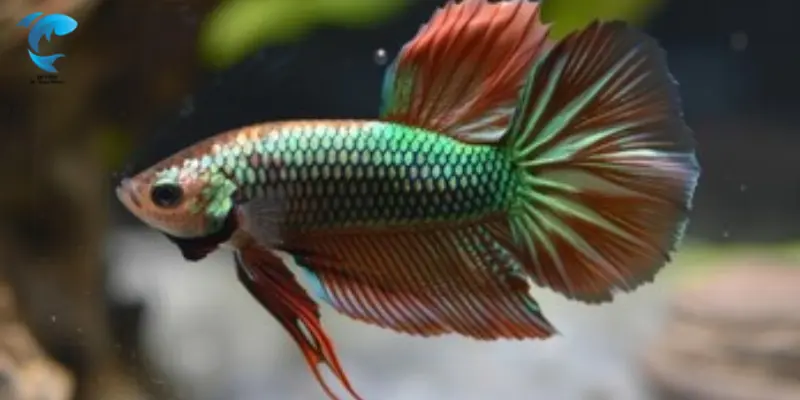
10. Rosetail Betta
- Description: Rosetail Bettas have an incredibly unique tail, with multiple layers of fins that overlap to create a ruffled, rose-like appearance. This makes them one of the most visually appealing Betta varieties.
- Colors: Rosetail Bettas come in various colors, including vibrant red, blue, and purple.
- Care Considerations: Rosetail Bettas are often more fragile due to their complex tail structure, so extra care must be taken to prevent fin tears and ensure a stable tank environment.

11. Cambo Betta
- Description: The Cambo Betta is a hybrid from crossing the Cambodian Betta and other varieties. It is known for its long fins and pale, almost translucent body.
- Colors: Typically light pink or pale white bodies with vibrant colored tails and fins.
- Care Considerations: The Cambo betta is sensitive to water conditions and tends to do well in warm, stable environments.
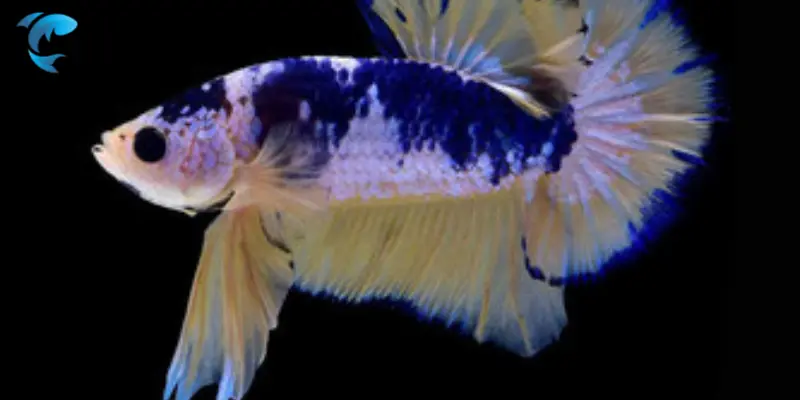
12. White Betta
- Description: The White Betta is a rarer color morph known for its clean, white body. Due to their unique appearance and pristine coloration, enthusiasts often highly prize these bettas.
- Colors: The White Betta is purely white, with its fins sometimes displaying subtle hints of color, such as pastel shades or light blues.
- Care Considerations: White Bettas require the same care as other Betta Fish but can be more sensitive to environmental stress and changes in water conditions.
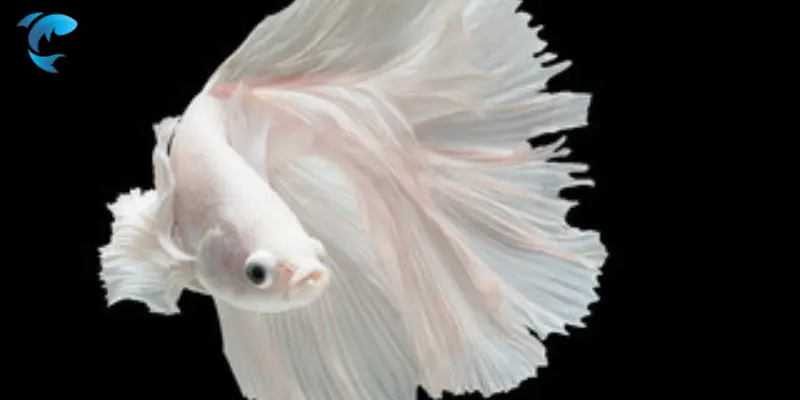
These are the most common and sought-after types of Betta fish, each with unique characteristics. Whether you’re looking for a Betta with stunning fins, vibrant colors, or a more natural, wild appearance, a Betta variety suits your preferences.
As you explore the different types of Betta Fish, it’s important to remember that each array may have its specific care requirements, especially concerning their tail fins and water conditions.
5. Betta Fish Tank Setup
Creating the right environment for your Betta is essential for its health and well-being. Here’s how to set up the perfect tank:
1. Choosing the Right Tank Size
- Minimum Size: A Betta’s recommended minimum tank size is 5 gallons. While they can survive in smaller tanks, they thrive in larger environments, offering more swimming space and a more stable habitat.
- Tank Shape: Instead of a bowl, opt for a long, rectangular tank to provide ample swimming space for your betta.
2. Water Conditions
- Temperature: To keep your Betta comfortable, keep the water temperature between 76°F and 82°F (24°C and 28°C) with a reliable heater.
- pH Levels: Aim for a pH range of 6.5 to 7.5 to ensure optimal health.
- Water Changes: To keep the water clean, perform regular water changes (about 25% to 50% weekly). Use a water conditioner to eliminate chlorine or chloramine.
3. Filtration
- Gentle Filtration: Since Betta fish prefer calm waters, choose a filter that provides gentle water flow. Sponge filters are a great option as they minimize water disturbance.
4. Tank Decorations
- Substrate: Smooth gravel or sand is ideal for the substrate. Avoid rough materials that could harm your Betta’s delicate fins.
- Hiding Spots: Betta fish enjoy having areas to hide. Add live plants, caves, or silk plants to create hiding spots.
- Lighting: Betta fish don’t require intense lighting. Soft aquarium lighting or natural light is sufficient for their tank.
Following these guidelines can create a peaceful and thriving environment for your Betta.
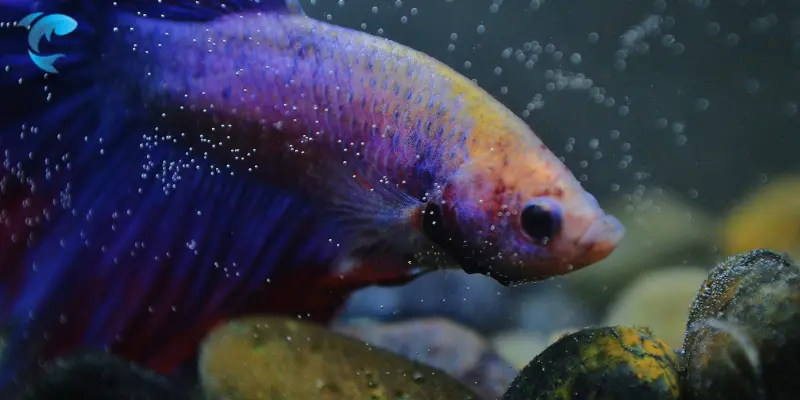
6. Feeding
Betta fish are carnivores and should be fed a balanced diet of Betta pellets, freeze-dried, or frozen food like brine shrimp and bloodworms. Feed your Betta once or twice a day, and only offer as much food as possible in 2-3 minutes.
7. Betta Fish Tank Mates and Compatibility
Betta fish are aggressive and territorial, especially males. Therefore, careful consideration is needed when selecting Betta fish tank mates.
Best Tank Mates for Betta Fish:
- Snails (e.g., Nerite snails, Mystery snails)
- Shrimp (e.g., Cherry shrimp, Ghost shrimp)
- Peaceful Fish (e.g., Corydoras catfish, Neon tetras)
Tank Mates to Avoid:
- Other male Bettas
- Aggressive species like Goldfish or Cichlids
- Long-finned species, such as Betta Fish, may mistake them for rivals.
8. Breeding Betta Fish
How Betta Fish Mate
Breeding Betta fish involves the male constructing a bubble nest and performing a courtship display to attract a female. Once the female is receptive, she will lay eggs, which the male will fertilize and collect into the nest. After fertilization, the male guards the nest and protects the eggs.
Breeding Setup
Set up a separate breeding tank with a gentle filter and plenty of plants. Ensure the water temperature is between 80°F and 82°F (27°C–28°C), and provide the male Betta with a chance to build his bubble nest.
Raising Betta Fry
After the fry hatch, they will remain in the bubble nest for a few days before swimming freely. Feed the fry infusoria or liquid food until they are large enough to eat crushed Betta pellets.
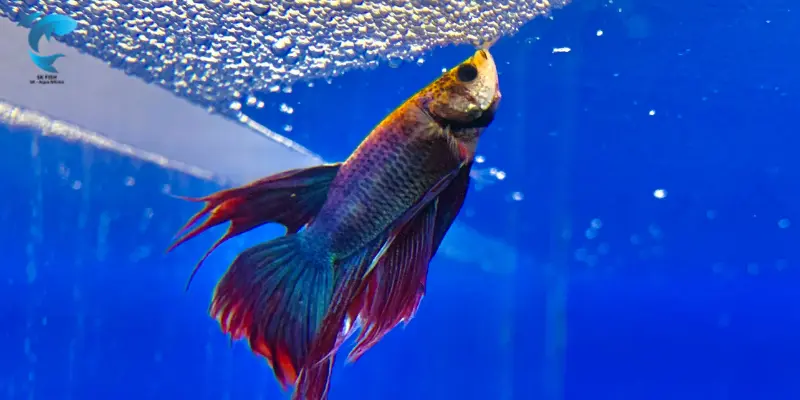
9. Myths and Common Misunderstandings
| Can Betta Fish Live in Small Bowls? |
|---|
Contrary to popular belief, Betta Fish should not be in small bowls. They need a minimum of 5 gallons of water to thrive and maintain healthy water conditions. |
| Are Betta Fish Lazy? |
|---|
Betta fish are not lazy; they are naturally territorial and can exhibit aggressive behavior. They need plenty of room and stimulation to remain active and healthy. |
| Can Betta Fish Live with Other Bettas? |
|---|
Male Bettas should never be housed together due to their aggressive nature. Female Bettas can sometimes be kept together in a sorority tank, but care must be taken to ensure sufficient space and hiding spots. |
Conclusion
Betta fish are fascinating, colorful, and low-maintenance pets that bring joy to many aquarium hobbyists. As a popular type of freshwater fish, understanding their needs for Betta fish tank setup, water conditions, diet, and care is crucial to ensure they lead a long, healthy, and happy life. Whether you’re a first-time fish keeper or an experienced aquarist, Betta fish are an engaging and visually stunning addition to any freshwater aquarium.
If you’re interested in learning more about Betta fish species or need tips on Betta fish care, breeding, or selecting compatible Betta fish companions, check out our detailed guides and resources!
Betta Fish FAQs
Betta fish, also known as Siamese fighting fish, are known for their aggressive behavior, especially males. They fight primarily for territory and dominance. In the wild, male Bettas protect their territory and court females, which leads to intense flaring and fighting when another male is introduced. They are particularly territorial and will often fight to the death if housed together in a confined space. If you’re keeping multiple Bettas, it’s crucial to only house one male per tank or select non-aggressive tank mates.
Betta fish are carnivores and require a protein-rich diet. Betta fish food should primarily consist of high-quality Betta pellets or flakes. In addition to prepared food, you can feed your Betta live or frozen food like brine shrimp, bloodworms, and daphnia. These protein-packed foods help maintain their health and vibrant color. Occasionally, you can offer them small amounts of finely chopped vegetables, like peas, to aid digestion.
Siamese fighting fish, or Betta Fish, generally grow to about 2.5 to 3 inches (6.35 to 7.62 cm) in length, including their fins. While their body size is relatively small, their long, flowing fins can make them appear larger, especially in varieties like Halfmoon or Crowntail Bettas. Male Bettas are slightly smaller than females but often have more pronounced, vibrant colors and longer fins.
Proper care for Betta fish includes:
- Tank size: Provide at least a 5-gallon tank for each Betta to thrive.
- Water temperature: Use a reliable heater to keep the water temperature between 76°F and 82°F (24°C and 28°C).
- Water quality: Maintain a stable pH between 6.5 and 7.5 and perform regular water changes (about 25% to 50% weekly).
- Filtration: Use a gentle filter, as strong currents can stress Betta fish.
- Diet: Feed your Betta a well-balanced diet of Betta pellets and occasional live or frozen food.
- Tank mates: Avoid housing two male Bettas together and choose peaceful companions like snails or small tetras.
- Enrichment: Provide hiding spots and plants for mental stimulation.
Betta fish are known for their vibrant and stunning colors. They can come in various hues, including red, blue, purple, green, and orange. Some varieties, like Dragon Scale Betta, have metallic scales, while others, like Koi Betta, feature beautiful patterns resembling koi fish. The color of Betta Fish can also change based on factors such as age, health, and environmental stress.
A 5-gallon tank is the minimum recommended size for a single Betta fish. While Bettas can survive in smaller tanks, they thrive better in larger spaces. A larger tank offers a more stable environment and allows for the proper filtration and water conditions required for their health. Bettas need space to swim, explore, and display their natural behaviors.
Betta fish are territorial and aggressive toward other males or species with long, colorful fins. However, some fish can coexist peacefully with Betta Fish, including:
- Corydoras catfish (small, peaceful bottom dwellers)
- Neon tetras (small, peaceful schooling fish)
- Snails (e.g., Nerite snails, Mystery snails)
- Shrimp (e.g., Cherry shrimp, Ghost shrimp) Avoid keeping Betta fish with fin-nipping species, such as tetras with long fins, or other aggressive Fish like goldfish or large cichlids.
Yes, Betta Fish do sleep. Unlike mammals, They do not have eyelids, so they may be hard to recognize when sleeping. Betta fish tend to rest during the night or in periods of inactivity throughout the day, usually at the bottom of the tank or near plants or other objects that provide shelter. Maintaining a consistent light cycle, with 12 hours of light and 12 hours of darkness, is important to help regulate their sleep patterns.
Betta fish should be fed once or twice daily, depending on their age and activity level. Provide only as much food as they can consume within 2-3 minutes to prevent overfeeding, which can lead to water quality issues. Overfeeding can also cause obesity and digestive problems in Betta fish.
Betta fish can typically survive 2 to 3 days without food, but leaving them without food for extended periods is not advisable. If you’re going away, consider using a fish feeder or asking someone to feed them. Betta fish food should be given regularly to maintain their health and energy levels.
Yes, Betta Fish need a heater to maintain a stable water temperature between 76°F and 82°F (24°C to 28°C). Betta fish are tropical Fish and need warm water to thrive. A reliable aquarium heater is crucial, especially if the room temperature fluctuates. Without a heater, Betta Fish can become stressed and weaken their immune systems, making them more susceptible to diseases.
Betta fish mating is a fascinating process. Here’s an overview:
- Male Betta courtship: The male Betta flares his fins and displays vibrant colors to attract a female. He will also build a bubble nest at the water’s surface, which he uses to house the eggs.
- Female Betta response: When the female is ready to mate, she will respond by showing vertical stripes on her body. If receptive, she will approach the male, and they will engage in a mating dance.
- Spawning: During spawning, the male wraps around the female, and the female releases her eggs, which the male fertilizes. He then collects the eggs and places them in the bubble nest.
- Egg care: The male Betta takes care of the eggs in the bubble nest until they hatch into fry, which will eventually swim on their own.

SK Fish is your trusted source for practical fish care tips and delicious seafood recipes. Our team is dedicated to providing reliable, well-researched content for fishing enthusiasts and home cooks alike.

- Be Respectful
- Stay Relevant
- Stay Positive
- True Feedback
- Encourage Discussion
- Avoid Spamming
- No Fake News
- Don't Copy-Paste
- No Personal Attacks



- Be Respectful
- Stay Relevant
- Stay Positive
- True Feedback
- Encourage Discussion
- Avoid Spamming
- No Fake News
- Don't Copy-Paste
- No Personal Attacks





